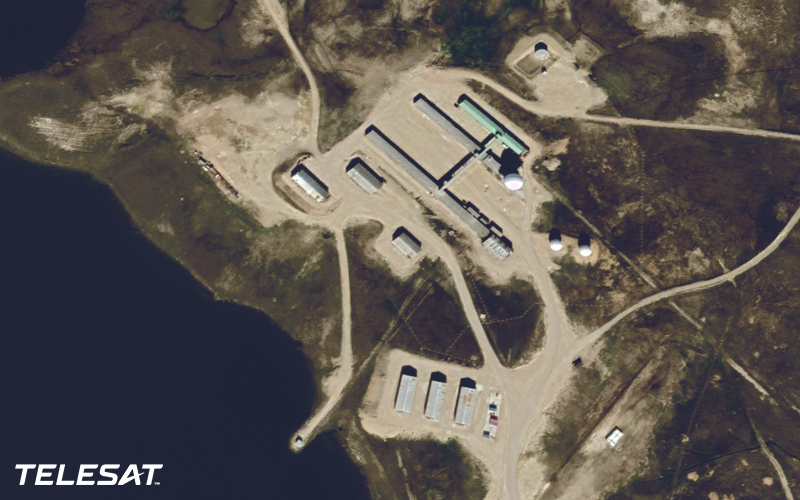The dramatic beauty of environments like the Arctic are alluring. Yet, the climate and ruggedness of these remote locations create multiple challenges. For example, the terrain – including glaciers, permafrost, deep sea, and inhospitable temperatures — makes it difficult to build communications infrastructure. That’s a problem for researchers who wish to explore this region, but also for our defence agencies who protect national territories.
Satellites have been providing critical connectivity in remote areas where it is not economical or feasible to deploy fibre. For decades, Telesat Geostationary Equatorial Orbit (GEO) satellites have been a key resource in delivering mission-critical communications solutions for enterprise and defence customers in Canada and throughout the world. These capabilities will be greatly enhanced and expanded with our future Telesat Lightspeed network, an innovative constellation of advanced Low Earth Orbit (LEO) satellites that will provide high data-rate resilient backhaul connectivity with ultra-low latency and true global coverage – including the polar regions.
As part of the North American Aerospace Defense Command (NORAD) modernization project, Canada’s Department of National Defence is now in the definition phase for its Enhanced Satellite Communications Project – Polar (ESCP-P). The ESCP-P program will be a small constellation of satellites operating in a highly elliptical orbit (HEO).
The objective is to provide the Canadian Armed Forces with 24/7 X-band, military Ka-band and ultra-high frequency (UHF) connectivity over the North Pole. These military-specific frequency bands offer hardened security for tactical operations, and are expected to provide initial operational capability in 2035.
Communications resiliency and redundancy is paramount in designing military satellite communications [or MILSATCOM]. Multi-orbit (GEO, HEO, LEO) and multi-frequency options ensure always-on connectivity for defence forces.
Intellian, a leading antenna system manufacturer and Telesat partner, now provides a tri-band terminal for X-band, as well as military and commercial Ka-band networks. Defense customers can simultaneously use X-band and Ka-band frequencies to transmit and receive data, which will give unprecedented connectivity for mission-critical operations across multiple orbits. These antennas can be deployed today and are compatible with Telesat’s GEO satellites, as well as the future Telesat Lightspeed LEO network and the ESCP-P constellation.
The Canadian Armed Forces will be able to leverage the secure Telesat Lightspeed network for multi-Gbps data links to the Arctic in advance of ESCP-P availability. Telesat Lightspeed services can support defence missions globally and NORAD modernization efforts in several ways, including:
- Base connectivity: Forward operating bases throughout the North and across the globe can access multi-Gbps data links for operations, as well as morale and welfare connectivity.
- Low latency applications: Command and control of unmanned vehicles require ultra-low latency that GEO and HEO orbits cannot provide. Telesat Lightspeed offers round-trip latency under 50 milliseconds for fibre-like command links on a global scale, offering joint command and control capability to Canada’s Allies.
- Space relay services: Telesat’s LEO satellites are optically interlinked, creating a global mesh network in space. Remote sensors in the NORAD modernization project, whether aero, maritime or space-based can pass data from any point on Earth to a central command center for analysis without bypassing foreign terrestrial infrastructure.
In addition, Telesat Lightspeed LEO satellites provide enterprise-grade, secure connectivity. We have adopted the National Institute of Standards and Technology (NIST) Cybersecurity Framework for our global mesh network. Also, Telesat will meet the highest Transmission Security (TRANSEC) and Infrastructure Asset Pre-Assessment Program (IA-PRE) requirements developed by the U.S. Department of Defense.
Telesat Lightspeed is well-poised to provide increased resiliency for the ESCP-P project, while also addressing the government’s key objectives for NORAD modernization.



